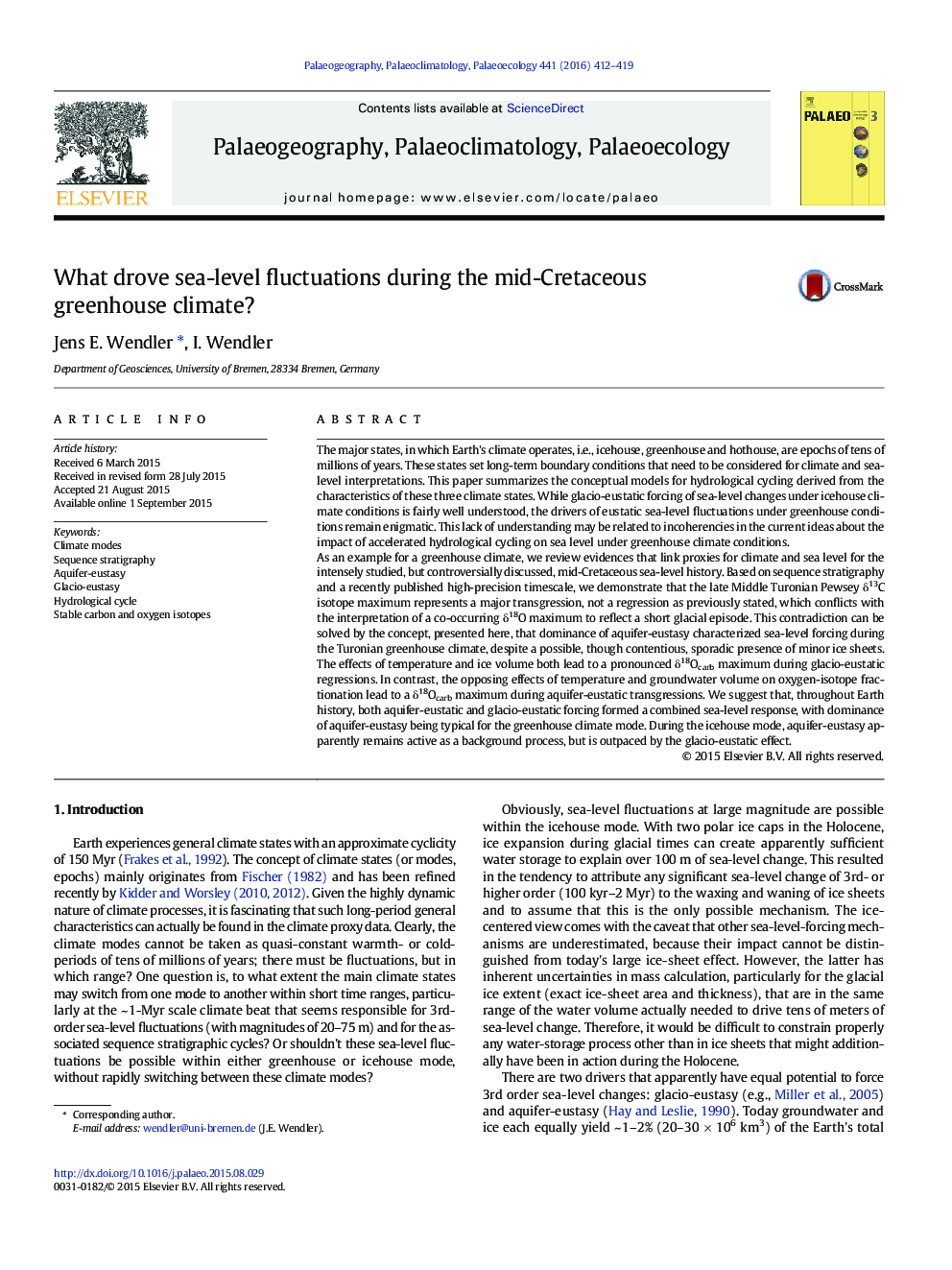| کد مقاله | کد نشریه | سال انتشار | مقاله انگلیسی | نسخه تمام متن |
|---|---|---|---|---|
| 6349459 | 1313957 | 2016 | 8 صفحه PDF | دانلود رایگان |
- Turonian climate cooling corresponds to transgressions not lowstands.
- Combined cooling and high sea-level are incompatible with glacio-eustasy.
- Aquifer-eustasy dominates in greenhouse modes.
The major states, in which Earth's climate operates, i.e., icehouse, greenhouse and hothouse, are epochs of tens of millions of years. These states set long-term boundary conditions that need to be considered for climate and sea-level interpretations. This paper summarizes the conceptual models for hydrological cycling derived from the characteristics of these three climate states. While glacio-eustatic forcing of sea-level changes under icehouse climate conditions is fairly well understood, the drivers of eustatic sea-level fluctuations under greenhouse conditions remain enigmatic. This lack of understanding may be related to incoherencies in the current ideas about the impact of accelerated hydrological cycling on sea level under greenhouse climate conditions.As an example for a greenhouse climate, we review evidences that link proxies for climate and sea level for the intensely studied, but controversially discussed, mid-Cretaceous sea-level history. Based on sequence stratigraphy and a recently published high-precision timescale, we demonstrate that the late Middle Turonian Pewsey δ13C isotope maximum represents a major transgression, not a regression as previously stated, which conflicts with the interpretation of a co-occurring δ18O maximum to reflect a short glacial episode. This contradiction can be solved by the concept, presented here, that dominance of aquifer-eustasy characterized sea-level forcing during the Turonian greenhouse climate, despite a possible, though contentious, sporadic presence of minor ice sheets. The effects of temperature and ice volume both lead to a pronounced δ18Ocarb maximum during glacio-eustatic regressions. In contrast, the opposing effects of temperature and groundwater volume on oxygen-isotope fractionation lead to a δ18Ocarb maximum during aquifer-eustatic transgressions. We suggest that, throughout Earth history, both aquifer-eustatic and glacio-eustatic forcing formed a combined sea-level response, with dominance of aquifer-eustasy being typical for the greenhouse climate mode. During the icehouse mode, aquifer-eustasy apparently remains active as a background process, but is outpaced by the glacio-eustatic effect.
Journal: Palaeogeography, Palaeoclimatology, Palaeoecology - Volume 441, Part 3, 1 January 2016, Pages 412-419
